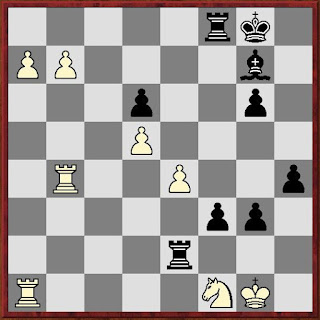Back on Christmas
I posted a position from one of John Nunn's puzzle books. Here it is again:
Kudriashov vs. I Ivanov, USSR 1979
Black to move
5rk1/PP4b1/3p2p1/3P4/1R2P2p/5pp1/4r3/R4NK1 b - - 0 1
Nunn gives the solution as
1...Re1! 2 a8(Q) h3! 3 Ra2 g2! 4 Rf2 Rxf1+ 5 Rxf1 h2+ 6 Kxh2 gxf1(Q), the first two moves of which were played before White resigned. (I'll have this and more in a replayable board below.)
I didn't figure it out. I kept trying to make another move work. It seemed to me that 1...Rg2+ was the way to go, but I couldn't figure it out. When I saw Nunn's solution I figured it was the "correct" sequence, and that I had been off my rocker looking at the other move.
But lo and behold! When I put the position into ChessBase prior to publishing, the computer spit out that
1...Rg2+ was indeed a winning move. The trouble isn't with that move, but the follow-up, which runs
2 Kh1 (forced)
Rc2!!, and here White is losing in all lines.
Kudriashov vs. I Ivanov, USSR 1979
White to move
I'm not going to pretend to understand how White is losing by force here, but he is. I've included the main lines from the computer analysis below. Improvements can be found along the way, but it appears only for Black.


